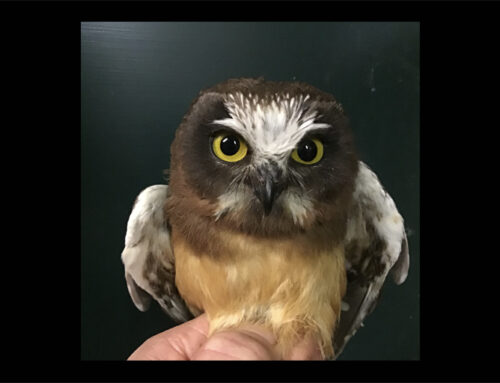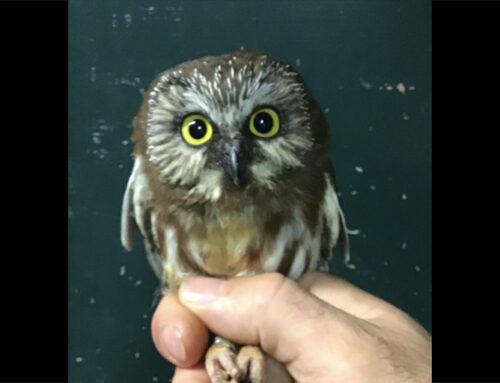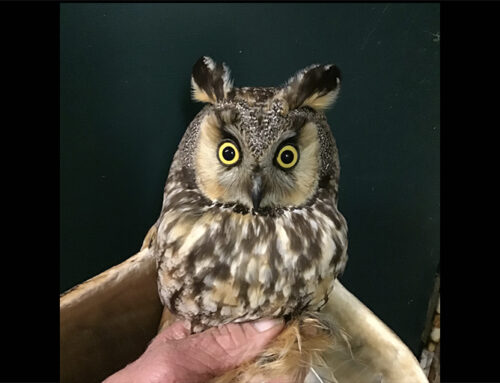Despite the fact that our nightly efforts continue to be regularly interrupted by high winds and/or mixed precipitation, things have picked up a bit since our last update. Aside from a couple of nights when nightly Northern Saw-whet numbers got up into the teens, we continue to be somewhat disappointed by the overall Saw-whets numbers so far this spring. Conversely, the Long-eared migration finally kicked in for a few nights, and a couple of new species have arrived. To date, we have banded 232 Saw-whets, two Boreals, 95 Long-eareds and three Barreds. Additionally, we have caught 19 Saw-whets that were previously banded, including two that we originally banded as juveniles during the summer season.
WPBO is one of very few migratory sites in North America that are fortunate enough to regularly band Boreal Owls, and we are one of just two of these sites that are located in the lower 48. We don’t know why, but the last time Boreals went through what should have been the peak of their irruptive cycle, all of these stations reported numbers that were significantly lower than what has been experienced in the past. Here at WPBO, we expect to band 70 or more during a peak spring season, but it looks as though the 20 banded last spring will likely prove to be our best result from the last cycle. We had begun to lose faith that we would band any this spring, but the first one arrived on April 23 and the second was banded on April 29. We still feel incredibly fortunate every time we are lucky enough to work with these amazing owls. Adding to the experience this spring was the opportunity to share it with some of our fellow field staff, Spring Fling attendees and Michigan Audubon staff.
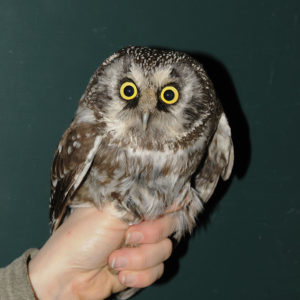
The first Boreal Owl of the season.
There is no new news from our Project Snowstorm owl Pickford, who we mentioned in our first post this fall. However, it was fun to have several Spring Fling attendees mention that they had been following her updates. Many of Project Snowstorm’s Snowy Owls have begun heading north, but Pickford appears to be content remaining on an inlet along the southeast shore of Prince Edward Island for now.
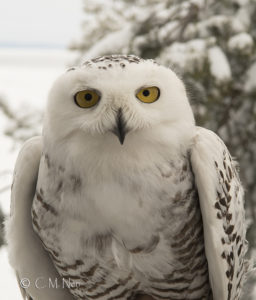
Pickford prior to her release back into the agricultural fields she called home back in February, 2018.
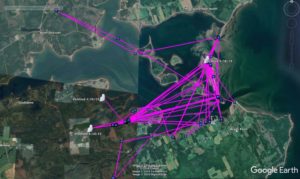
Pickford’s current territory on Prince Edward Island. (Project Snowstorm and Google Earth)
Chris Neri & Nova Mackentley



